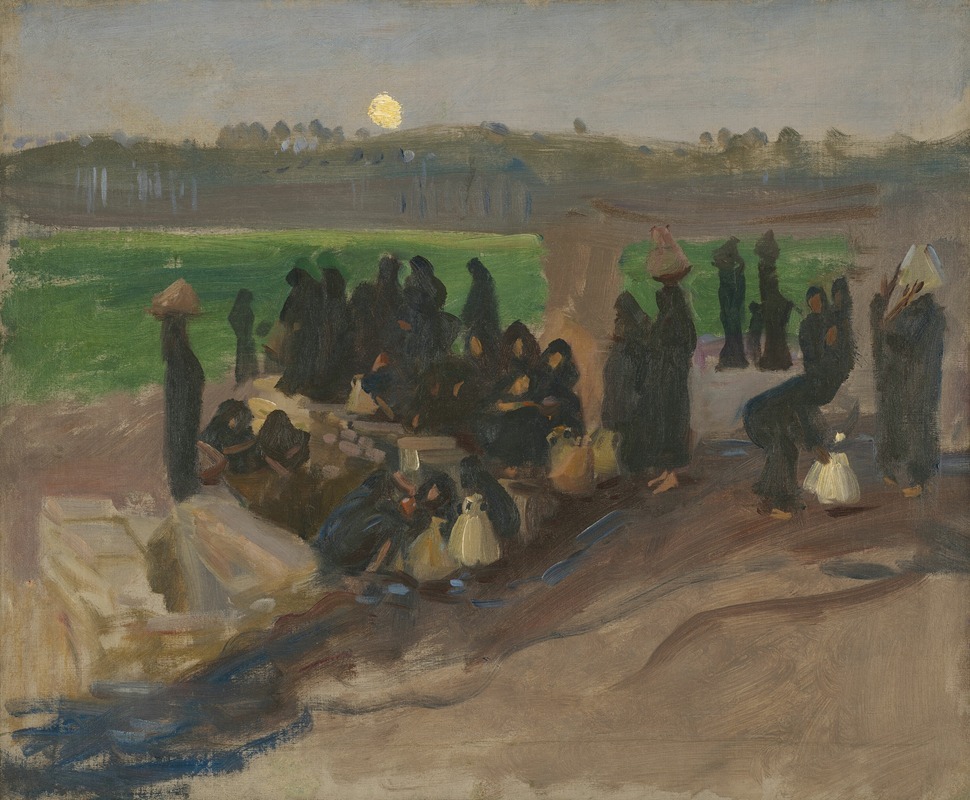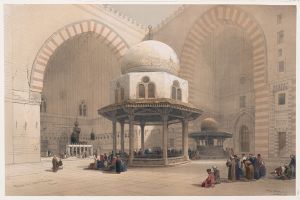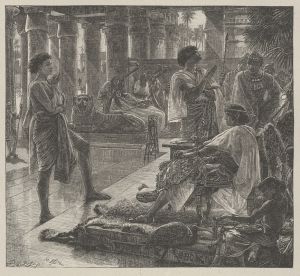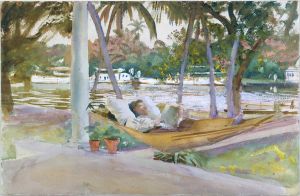
Water Carriers on the Nile
A hand-painted replica of John Singer Sargent’s masterpiece Water Carriers on the Nile, meticulously crafted by professional artists to capture the true essence of the original. Each piece is created with museum-quality canvas and rare mineral pigments, carefully painted by experienced artists with delicate brushstrokes and rich, layered colors to perfectly recreate the texture of the original artwork. Unlike machine-printed reproductions, this hand-painted version brings the painting to life, infused with the artist’s emotions and skill in every stroke. Whether for personal collection or home decoration, it instantly elevates the artistic atmosphere of any space.
"Water Carriers on the Nile" is a painting by the American artist John Singer Sargent, created in 1890-1891 during his travels in Egypt. Sargent, known for his portraiture and impressionistic style, often explored themes of light, color, and everyday life in his works. This painting is part of a series of works he produced while journeying through the Middle East and North Africa, regions that greatly influenced his artistic output during this period.
The painting depicts a group of figures carrying water along the Nile River, a scene that reflects the daily life and labor of the local population. Sargent's use of light and shadow captures the intense sunlight of the region, while his loose, fluid brushstrokes convey a sense of movement and immediacy. The figures are rendered with a focus on their gestures and postures rather than detailed facial features, emphasizing the physicality of their work and the environment in which they live.
"Water Carriers on the Nile" is notable for its atmospheric quality and its ability to evoke a sense of place. The painting demonstrates Sargent's interest in capturing the essence of his surroundings, as well as his skill in portraying the interplay of light and color. The work is also an example of Sargent's broader engagement with Orientalist themes, a common subject among Western artists of the 19th century who traveled to the Middle East and North Africa.
The painting is held in a private collection, and its exact provenance is not widely documented. However, it is recognized as an important piece within Sargent's body of work, reflecting his versatility as an artist and his ability to adapt his style to different subjects and settings.
This artwork is part of Sargent's lesser-known explorations beyond portraiture, offering insight into his travels and his fascination with diverse cultures and landscapes. It remains a testament to his ability to capture the beauty and complexity of everyday life in a foreign land.





![Great gateway leading to the Temple of Karnac [Karnak], Thebes. [Title vignette, vol. 2]](/imgs/217399/s/david-roberts-great-gateway-leading-to-the-temple-of-karnac-karnak-thebes-title-vignette-vol-2-29844773.jpg)
![Hermont [Armant], ancient Hirmonthis. Nov. 26th, 1838.](/imgs/217496/s/david-roberts-hermont-armant-ancient-hirmonthis-nov-26th-1838-3fc57e5.jpg)











